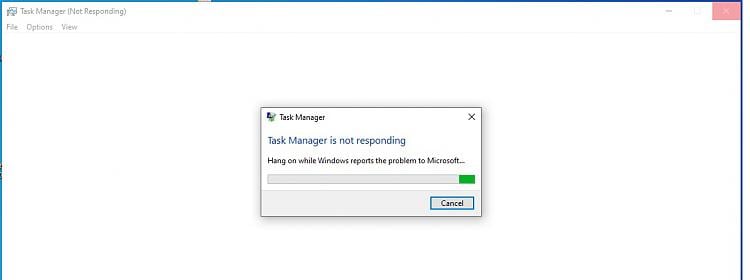
How to reset the Start Menu with default Windows 10 apps Note: You could also use Powershell to run the sfc /scannow command, but remember that you'll need to open an elevated Powershell terminal. Once you log back in, try to open the Start Menu to see if that fixed your issues. If System File Checker replaced any corrupt or missing system files, save all of your open work and restart your computer. Once System File Checker is finished, you'll either see a report of all the files it replaced, or if everything was fine, you'll see a message like this: Just be careful not to close the window while sfc is doing its thing. This process can take a little while, so feel free to do something else for 5-10 minutes. System File Checker will start going through all your system files and replace any corrupt or missing files with a cached copy. Once you open Command Prompt as an administrator, run the command sfc /scannow: To do this, you'll need to open the Windows Command Prompt as an administrator and run the System File Checker program. If the Start Menu is still giving you trouble, or other core Windows apps are crashing, then you can try to restore any missing or corrupt Windows system files. Sometimes an update goes awry, or you accidentally deleted an important file while digging around the filesystem. How to repair corrupt or missing Windows system files If it’s still not working normally, try one of the other fixes below. There will be a brief flash while Windows restarts Windows Explorer/Finder, along with the taskbar and Start Menu.Īfter that, try to open the Start Menu. Then right click on “Windows Explorer” and select “Restart”: Scroll through the list until you find the “Windows Explorer” process. To open the Task Manager, press Ctrl + Alt + Delete, then click the “Task Manager” button.Ĭlick “More details” to see a full list of open programs and background processes you’re running: If you have an issue with the Start Menu, the first thing you can try to do is restart the “Windows Explorer” process in the Task Manager. But it also controls things like the Start Menu, the taskbar, and other applications.

Windows Explorer, which is now called File Explorer, is the application you use to browse your file system and open programs and files.

Whatever specific issue you’re having with the Windows 10 Start Menu, we’ll go over some quick and not so quick fixes in this article. Sometimes the open Start Menu freezes up and is unresponsive, and other times it won’t open at all when you click the Start Menu button. And one of the more common bugs people running Windows 10 have faced is that the Start Menu suddenly stops working. Still, like with any operating system, there are bugs. Each update brings a lot of new features, and Microsoft has embraced the open source community in a way that was once thought impossible. Windows 10 has come a long way since it was first launched in 2015.


 0 kommentar(er)
0 kommentar(er)
